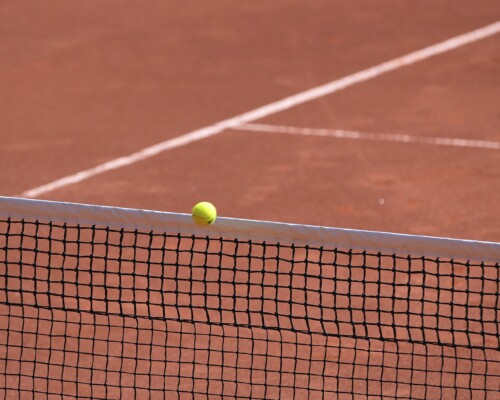Matchball
Beyond all probabilities.
Matchball. Even two. Four serves for an ace. The scene is set. A historic moment in sports history. Everyone gets ready for the standing ovation. Practically won. The 21st!
Silence, please! One point is still missing for the big win. The last one is supposed to be the most difficult. How difficult? What is the probability of winning?
90%! Because, according to a 2011 statistic, the top tennis players get two-thirds of their first serves into the court, winning 75% of the points. So in one third of the cases they have to go over the second serve. That way they still win 56% of the points. This results in a 69% probability of winning on one match point and 90% on two match points.
Really? 90%? But not just somebody is playing here! It’s Roger Federer against Novak Djokovic. The greatest of all times against the greatest return player of all times. What laws apply to this constellation?
Federer already lost the other two matches against Djokovic at Wimbledon: the finals of 2014 and 2015. In general, he only won the first of a total of 10 Grand Slam matches against Djokovic.
Federer had previously lost 21 matches on match points in his career. Most often – against Djokovic.
US Open 2010: Federer loses the semifinal after two match points against Djokovic.
US Open 2011: Federer loses the semifinal after two match points against Djokovic.
And in the recent past? Federer won two of the last ten duels. But now only this match, this day, July 14, 2019, counted: Federer hit twice as many winners in this match so far, twice as many aces, won twice as many break points and also more points overall. He even won more points in the two sets he lost. He played a fantastic match.
But Federer was older than Djokovic. Was he also more tired? More thoughtful? More nervous? Did the wind play a role? The position of the sun? The condition of the balls? The outcome of past duels? The grim look on Djokovic’s face? What else stood in his way?
A spectator sneezes.
Concentration. “C’ mon!” One more point for eternity.
So, what are the odds of winning at 40:15 in the fifth set in a Wimbledon final Federer vs. Djokovic? 90 to 10? 10 to 90? 50 to 50? Are you still hesitating?
Need more data, such as the number of unforced errors in the three nail-biting tie breaks? Eleven by Federer, one by Djokovic. Or would you like a sophisticated model that calculates the probability?
A simple game with two protagonists and clear rules. Statistics on every detail. And yet it is so difficult. What does it look like then in the financial markets, with millions of protagonists and constantly changing, ambiguous rules? We will discuss this in the next post.
Read the latest posts from this series:

